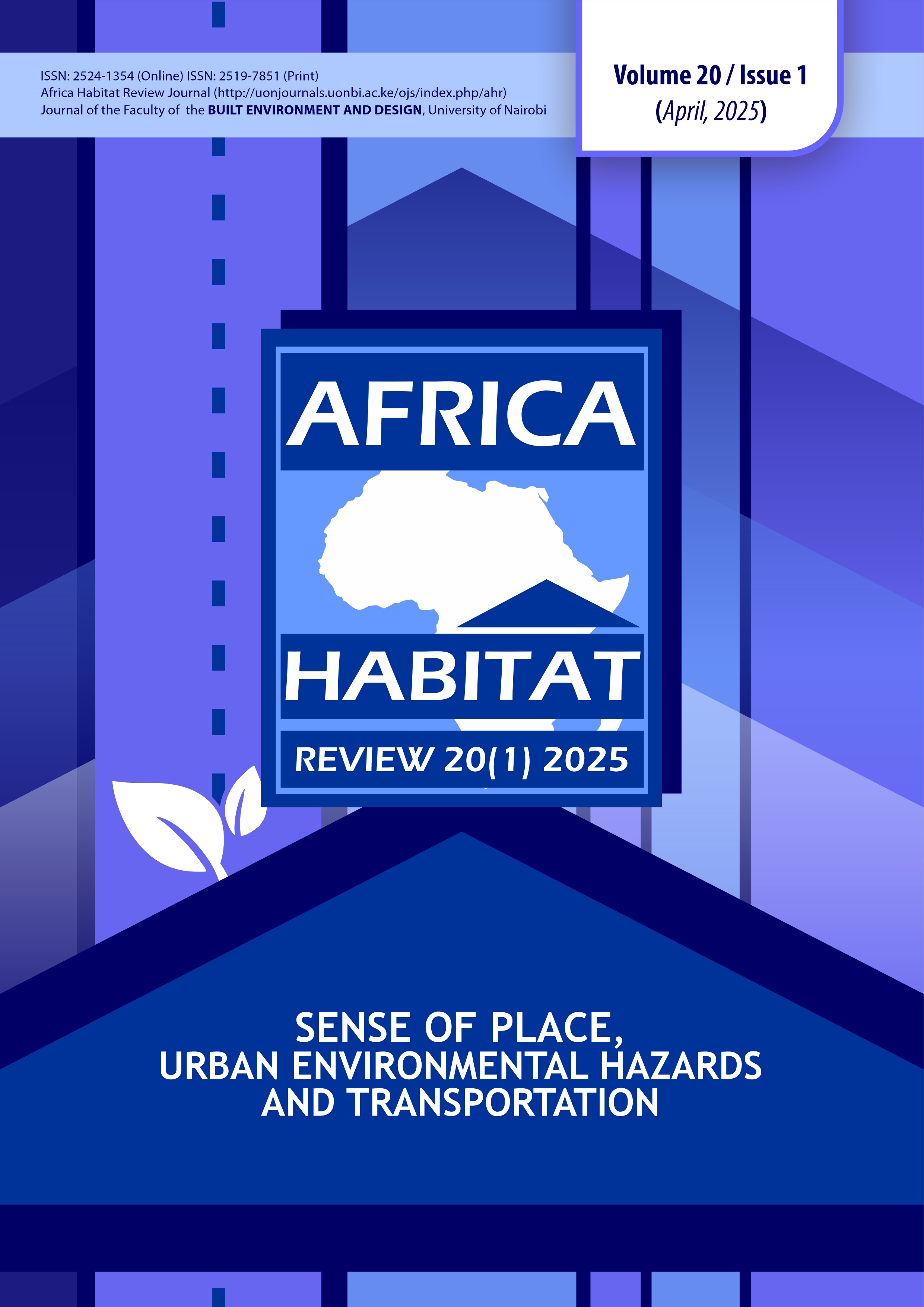Finding Value, Conserving Heritage in Townscapes along the Kenya Railway
Abstract
The emergence of some towns in Kenya’s hinterland is attributable to the colonial railroad of the early 1900s. The towns, along the Kenya railway line, seem to share an idiosyncratic townscape heritage requiring conservation. However, the heritage and its associated values remain unknown. This paper aimed to identify the underlying heritage values in selected towns along the Kenya Railway line. A qualitative approach and a cross-sectional research design were adopted. Three towns; Limuru, Naivasha and Molo, with higher urban populations than the rest were selected from a list of 19 between Nairobi and Kisumu cities. 360 respondents were interviewed; 70 in Limuru, 160 in Naivasha, and 130 in Molo. Townscape heritage data was collected through observation, while data on heritage values was collected through interviews using attitudinal statements on Likert scales. Exploratory factor analysis was used to determine latent heritage values. The Chi-Square test was significant (p < .05). Five main heritage values explaining 43.28% of the total variance were extracted; cultural continuity, functional-economic, identity, placeness and historicity. Additionally, three other values; rarity, evidence and memory were considered for the completeness of the value spectrum. It was concluded that the identified heritage values are interdependent and thematically communicate communities’ aspirations and should provide guidance to the values-based approach to conservation. This paper recommends integrating heritage values in conservation planning and engaging communities in the process to achieve culturally sustainable urban development programmes.


